
How to Use arduino uno: Examples, Pinouts, and Specs
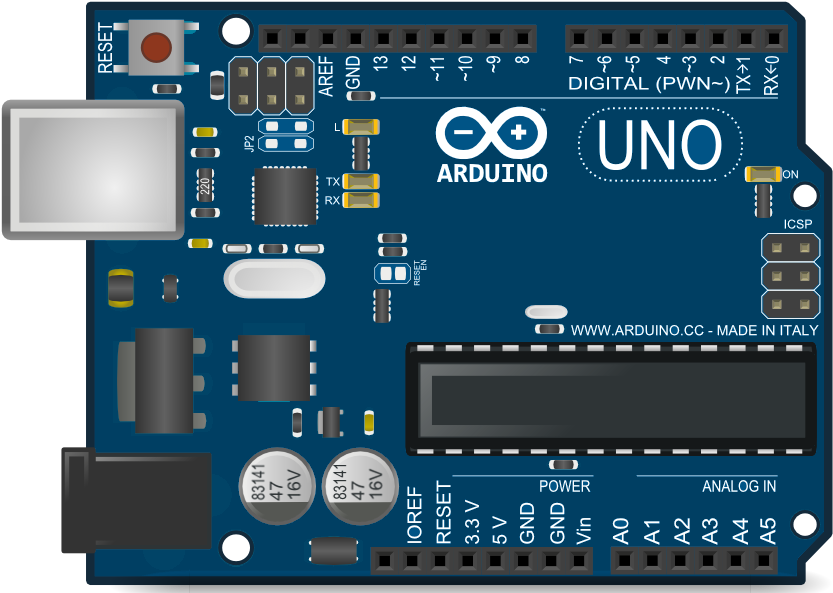
 Design with arduino uno in Cirkit Designer
Design with arduino uno in Cirkit DesignerIntroduction
The Arduino Uno is a microcontroller board based on the ATmega328P. It is one of the most popular and versatile development boards in the Arduino ecosystem, making it an excellent choice for beginners and professionals alike. The board features 14 digital input/output pins (6 of which can be used as PWM outputs), 6 analog inputs, a USB connection for programming, a power jack, and a reset button. It is designed to simplify the process of building interactive projects and prototypes.
Explore Projects Built with arduino uno
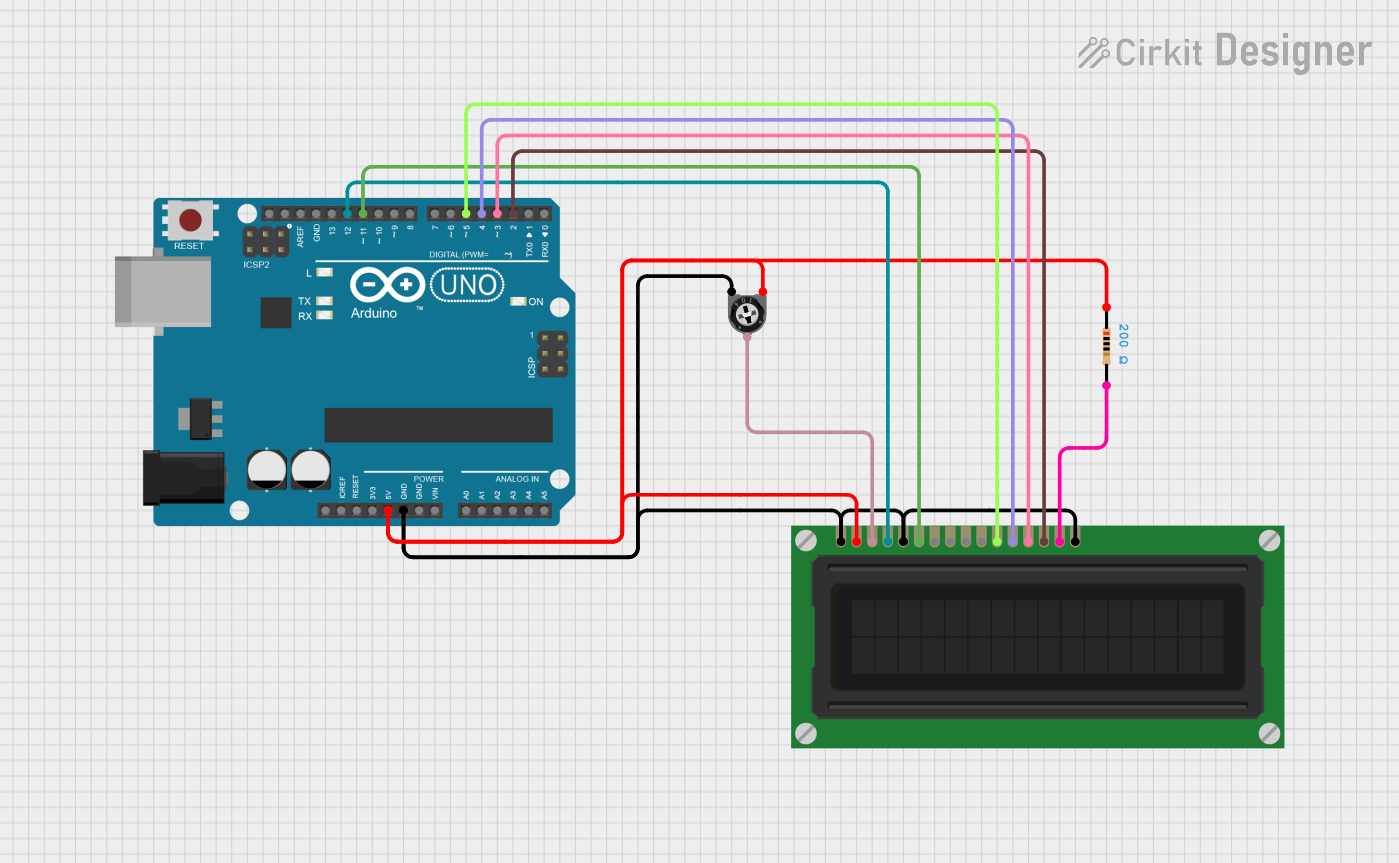
 Open Project in Cirkit Designer
Open Project in Cirkit Designer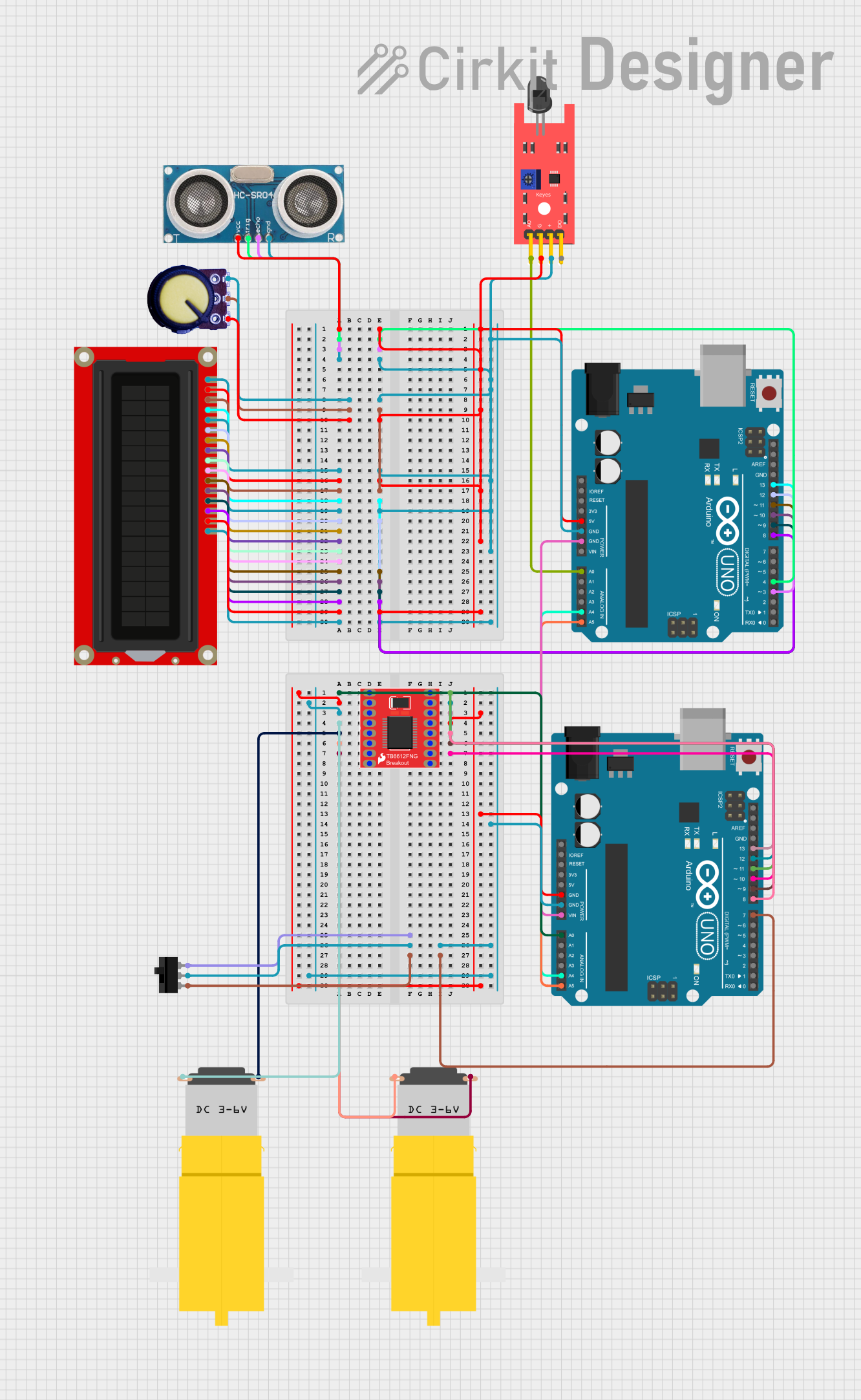
 Open Project in Cirkit Designer
Open Project in Cirkit Designer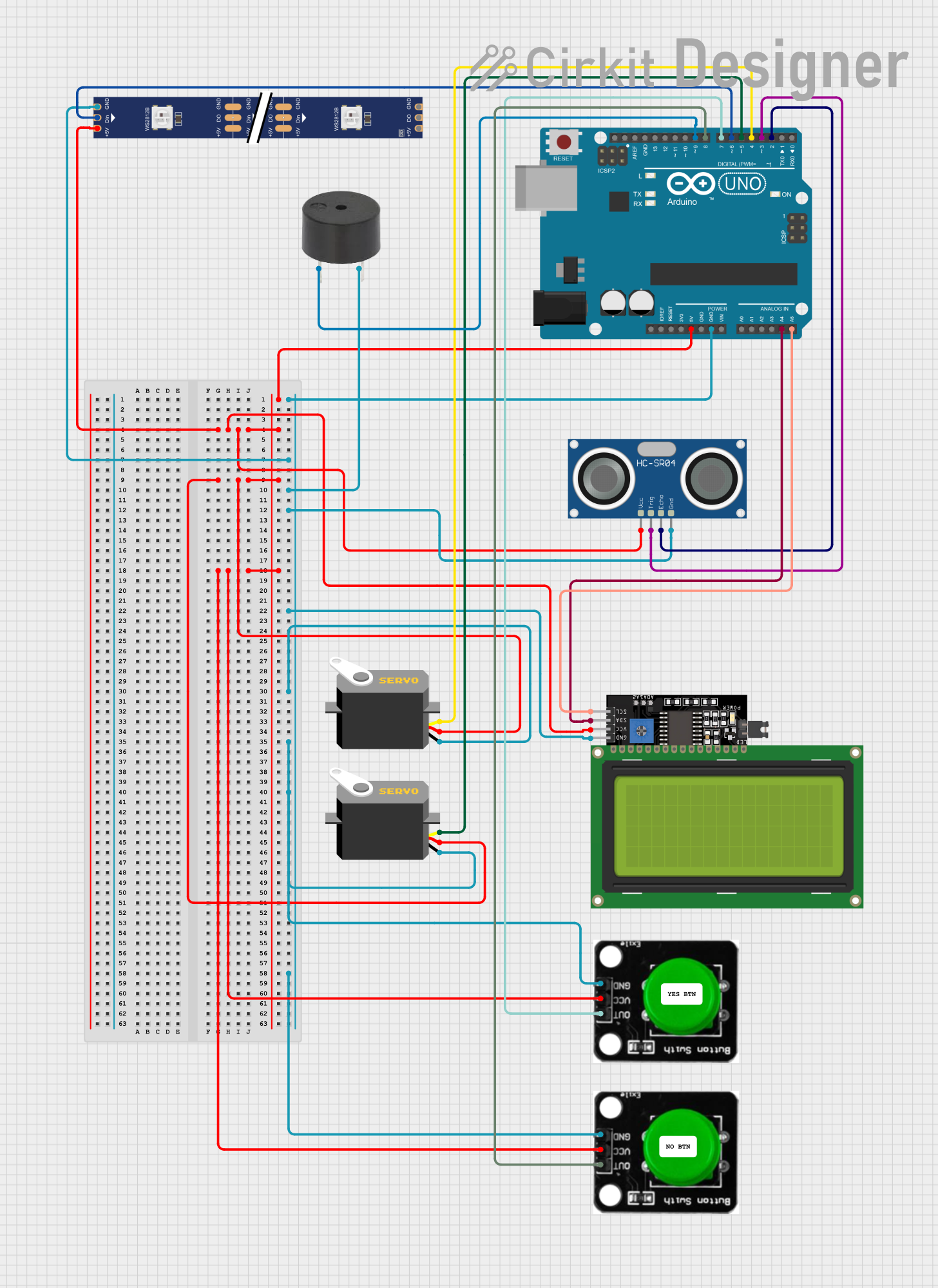
 Open Project in Cirkit Designer
Open Project in Cirkit Designer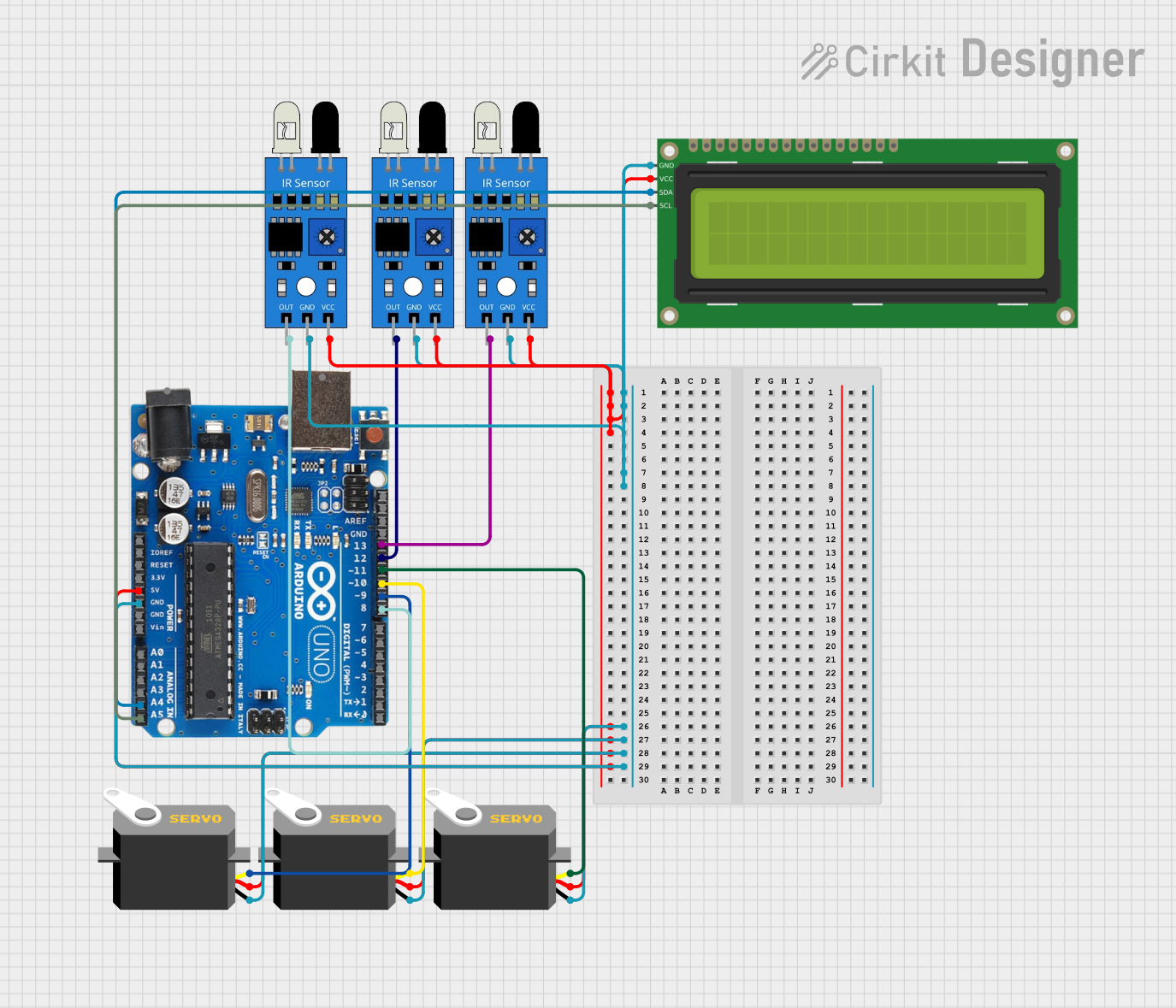
 Open Project in Cirkit Designer
Open Project in Cirkit DesignerExplore Projects Built with arduino uno

 Open Project in Cirkit Designer
Open Project in Cirkit Designer
 Open Project in Cirkit Designer
Open Project in Cirkit Designer
 Open Project in Cirkit Designer
Open Project in Cirkit Designer
 Open Project in Cirkit Designer
Open Project in Cirkit DesignerCommon Applications and Use Cases
- Robotics and automation projects
- IoT (Internet of Things) devices
- Sensor-based systems (e.g., temperature, motion, light detection)
- LED control and lighting systems
- Educational tools for learning programming and electronics
- Prototyping and testing circuits
Technical Specifications
Key Technical Details
- Microcontroller: ATmega328P
- Operating Voltage: 5V
- Input Voltage (recommended): 7-12V
- Input Voltage (limits): 6-20V
- Digital I/O Pins: 14 (6 PWM outputs)
- Analog Input Pins: 6
- DC Current per I/O Pin: 20 mA
- Flash Memory: 32 KB (0.5 KB used by bootloader)
- SRAM: 2 KB
- EEPROM: 1 KB
- Clock Speed: 16 MHz
- USB Connection: Type-B
- Dimensions: 68.6 mm x 53.4 mm
- Weight: 25 g
Pin Configuration and Descriptions
The Arduino Uno has a total of 28 pins, including digital, analog, power, and communication pins. Below is a detailed breakdown:
Digital Pins
| Pin Number | Function | Description |
|---|---|---|
| 0 (RX) | Serial Receive (UART) | Used for receiving serial data |
| 1 (TX) | Serial Transmit (UART) | Used for transmitting serial data |
| 2-13 | Digital I/O | General-purpose digital input/output |
| 3, 5, 6, 9, 10, 11 | PWM Output | Pulse Width Modulation (PWM) capable pins |
Analog Pins
| Pin Number | Function | Description |
|---|---|---|
| A0-A5 | Analog Input | Reads analog signals (0-5V) |
Power Pins
| Pin Name | Function | Description |
|---|---|---|
| VIN | Input Voltage | External power input (7-12V recommended) |
| 5V | Regulated 5V Output | Powers external components |
| 3.3V | Regulated 3.3V Output | Powers low-voltage components |
| GND | Ground | Common ground for the circuit |
| RESET | Reset | Resets the microcontroller |
Communication Pins
| Pin Name | Function | Description |
|---|---|---|
| SDA | I2C Data Line | Used for I2C communication |
| SCL | I2C Clock Line | Used for I2C communication |
| SPI (10-13) | SPI Communication | Used for SPI communication |
Usage Instructions
How to Use the Arduino Uno in a Circuit
Powering the Board:
- Connect the Arduino Uno to your computer using a USB Type-B cable for programming and power.
- Alternatively, use an external power supply (7-12V) via the VIN pin or the DC power jack.
Programming the Board:
- Install the Arduino IDE from the official Arduino website.
- Connect the board to your computer and select the correct board and port in the IDE.
- Write your code in the IDE and upload it to the board using the "Upload" button.
Connecting Components:
- Use the digital and analog pins to connect sensors, actuators, and other components.
- Ensure that the total current drawn by the components does not exceed the board's limits.
Important Considerations and Best Practices
- Avoid short circuits between pins or between pins and ground.
- Use resistors with LEDs to limit current and prevent damage.
- When using external power, ensure the voltage is within the recommended range (7-12V).
- Use decoupling capacitors for noise-sensitive circuits.
- Always double-check connections before powering the board.
Example: Blinking an LED
The following example demonstrates how to blink an LED connected to pin 13 of the Arduino Uno.
// This program blinks an LED connected to pin 13 of the Arduino Uno.
// The LED will turn on for 1 second and off for 1 second in a loop.
void setup() {
pinMode(13, OUTPUT); // Set pin 13 as an output pin
}
void loop() {
digitalWrite(13, HIGH); // Turn the LED on
delay(1000); // Wait for 1 second
digitalWrite(13, LOW); // Turn the LED off
delay(1000); // Wait for 1 second
}
Troubleshooting and FAQs
Common Issues and Solutions
The board is not detected by the computer:
- Ensure the USB cable is properly connected and functional.
- Check if the correct port is selected in the Arduino IDE.
- Install or update the USB drivers for the Arduino Uno.
Code does not upload to the board:
- Verify that the correct board is selected in the Arduino IDE.
- Press the reset button on the board before uploading.
- Ensure no other program is using the COM port.
Components are not working as expected:
- Double-check the wiring and connections.
- Ensure the components are compatible with the Arduino Uno.
- Verify that the code logic is correct.
The board overheats:
- Check for short circuits or excessive current draw.
- Use an external power supply if the USB port cannot provide sufficient power.
FAQs
Q: Can I power the Arduino Uno with a battery?
A: Yes, you can use a 9V battery connected to the DC power jack or the VIN pin.
Q: What is the maximum current the Arduino Uno can supply?
A: The 5V pin can supply up to 500 mA when powered via USB, and up to 1A when powered via an external power supply.
Q: Can I use the Arduino Uno for wireless communication?
A: Yes, you can use wireless modules like the HC-05 Bluetooth module or ESP8266 Wi-Fi module with the Arduino Uno.
Q: Is the Arduino Uno compatible with shields?
A: Yes, the Arduino Uno is compatible with a wide range of shields designed for the Arduino ecosystem.